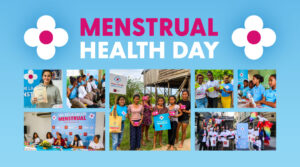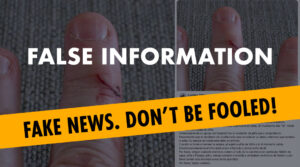HIV Pre-Exposure Prophylaxis (PrEP) is an effective method of reducing the risk of contracting the HIV virus in people who are at high risk of infection. However, it is important to note that this method does not protect against other sexually transmitted infections (STIs).
It seems that some people using PrEP forget about the risks of contracting other STIs and ditch the condom altogether. It should not be forgotten that the preventive strategy against HIV is based on the use of antiretroviral drugs that have been shown to be effective against the virus, but not against other infections that are transmitted through sexual intercourse.
A revolutionary method
PrEP is an antiretroviral treatment that works by preventing HIV from establishing itself and replicating in the body, should the person be exposed to the virus. Until now, the most widely used route of administration is a daily pill, but new options have also been created, such as an injectable that is given every two months, and is only available in some countries.
PrEP meant a totally new approach to HIV prevention, since drugs already known were used as a “shield” that prevented the entry of the virus, without the need to use barrier methods such as condoms.
But while PrEP is highly effective in preventing HIV infection, it does not provide protection against other STIs such as syphilis, gonorrhea, genital herpes, or chlamydia. It is important that people considering using PrEP take this limitation into account and consult with health personnel to receive adequate guidance on how to comprehensively protect themselves against STIs.
A complex landscape
No other STI combines the absence of a cure with near 100% lethality when left untreated like HIV does. However, other STIs can have serious health consequences. Bacterial infections such as gonorrhea, syphilis, chlamydia, lymphogranuloma venereum (LGV), as well as other infections such as trichomoniasis, are usually easily curable, but if left untreated they can have serious health consequences in some people.
Syphilis can also cause severe symptoms early in the disease, and drug resistance in gonorrhea has been a growing concern in recent years.
In addition, viruses that can be transmitted sexually include herpes, genital warts, and hepatitis B and C; the latter two can cause deadly liver diseases if left untreated, and human papillomavirus (HPV) can cause cervical, anal, and oral cancer.
Cause or effect?
Despite the progress that PrEP has represented in stopping the spread of HIV, some epidemiological studies have detected that other STIs increased their transmission rates. This has led research teams to ask: is the increase in other STIs due to the increasing availability of PrEP (and condom disuse) or are they just two phenomena that coincide in time?
To try to answer this question, the British web portal Aidsmap.com, specializing in HIV, compiled and analyzed much of the scientific data available to date.
These figures show that, of the most common STIs, only syphilis and gonorrhea (in addition to HIV) have been especially concentrated in gay men. As early as 2001, this portal expressed concern that hundreds of cases of syphilis in gay men had been reported in the previous two years, compared to a few cases in the mid-1990s.
In the UK, the proportion of syphilis cases in gay men increased from 58% in 2006 to 85% in 2014. Similarly, gonorrhea cases in gay men increased from 27% in 2008 to 70% in 2015.
In statistical terms, British gay and bisexual men are today 17 times more likely to be diagnosed with syphilis than heterosexual men and almost six times more likely to be diagnosed with gonorrhea.
Does PrEP use lead to an increase in STIs?
From an epidemiological standpoint, Aidsmap says, it is not clear whether PrEP use is actually causing an increase in STIs, or whether PrEP is instead being adopted by people who would already be more likely to contract them, due to its sexual practices. Some scientific studies have found increases in STIs after PrEP is started, but others have found no increase.
In a few more cases, high rates of STIs were already present before PrEP adoption, which would suggest that the diagnoses might have been a motivation for people to start using PrEP.
Remember that today there are many options to protect yourself from HIV, the important thing is that you know them thoroughly and make the best choice for your life. At AHF Latin America and the Caribbean we have reliable information for you, free HIV tests, linkage to treatment, if you live with HIV, and free condoms, so you can take care of your sexual health. Locate our offices in your country and approach our services.







